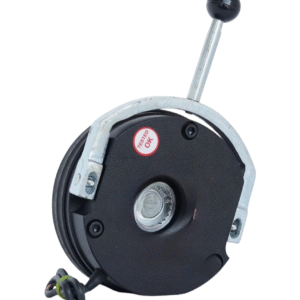-
Solenoid:
An electromagnetic coil that, when energized, creates a magnetic field that pulls a plunger or armature.
-
Spring:
A spring is used to apply the brake force.
-
Drum:
The rotating component that the brake shoes press against to create friction and stop the rotation.
-
Friction material that is forced against the drum when the solenoid is de-energized.
How it works:
-
1. Braking (Power Off):When the solenoid is not energized (power is off), the spring force pushes the brake shoes against the drum, creating friction and preventing rotation.
-
2. Release (Power On):
When the solenoid is energized, the magnetic force pulls the plunger or armature, overcoming the spring force and retracting the brake shoes away from the drum, allowing it to rotate freely.
-
Fail-safe:
The spring-applied design ensures that the brake engages automatically if power is lost, providing a safety mechanism.
-
Easy Installation and Maintenance:
These brakes are designed for easy installation and minimal maintenance requirements.
-
Wide range of drum sizes:Solenoid brakes can be found in various drum sizes, from 100mm to 380mm in diameter.





Reviews
There are no reviews yet.